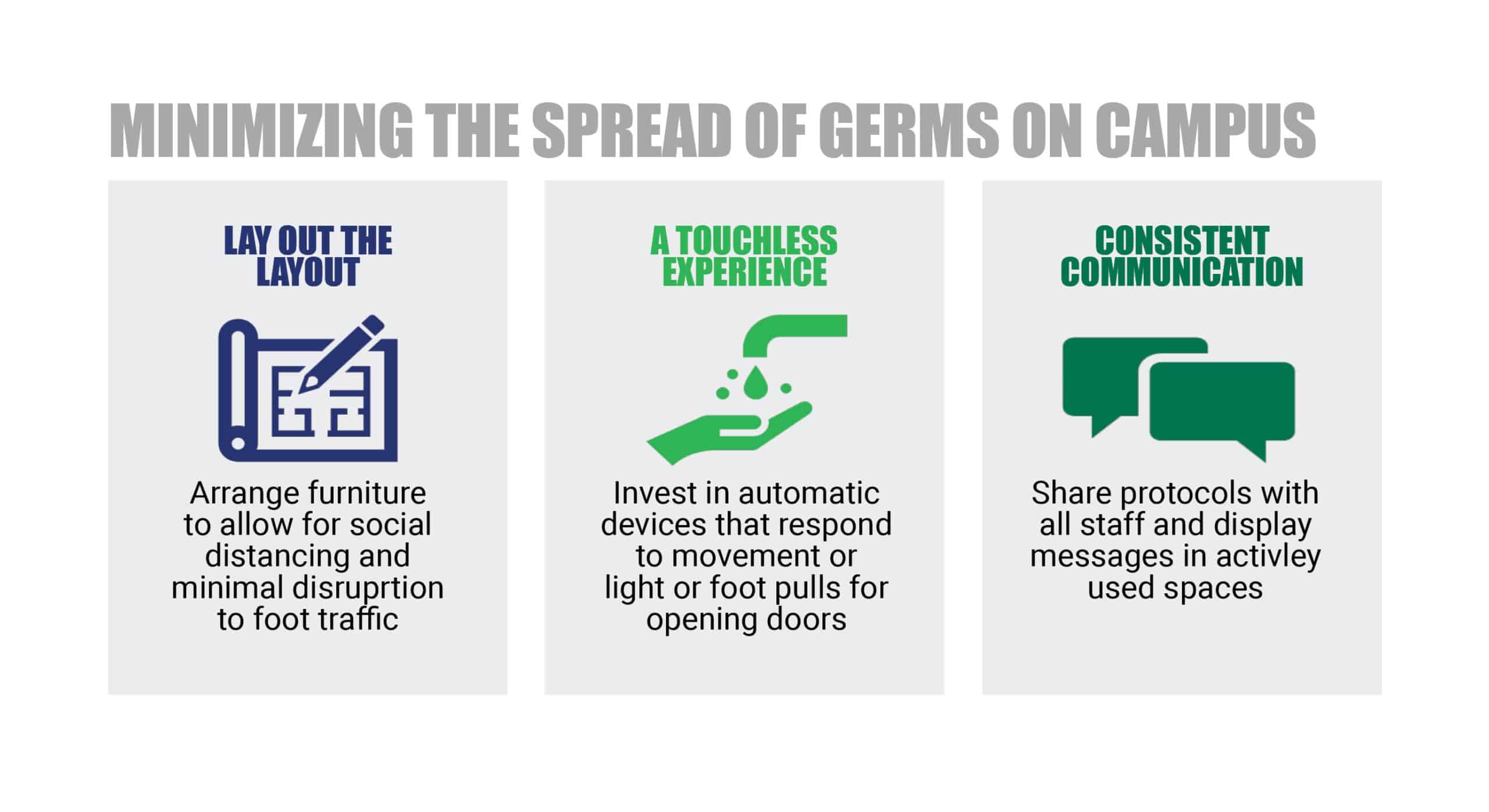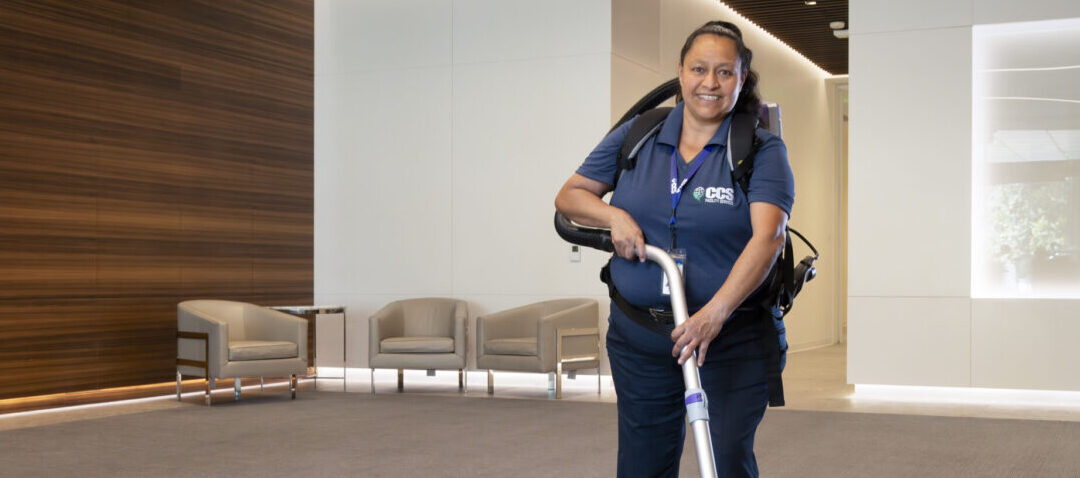With most students and staff members vacating campus for a whole week, educational administrators have a fantastic opportunity to revisit campus cleaning protocols and perform a deep dive in preparation for the end of spring break. Facility teams can use this time to further develop methods of cleaning for health, placing their schools in an advantageous position for the duration of the school year. As the first company in the world to earn GBAC (Global Biorisk Advisory Council) STAR Service™ accreditation, CCS Facility Services’ expertise in cleaning for the health of building occupants has been formally recognized by the leading global authority. Using our best practices, educational leaders can enter the next quarter confident in their ability to fight infectious disease in schools.
Before getting into the nitty gritty (literally) of janitorial work, it is important to have an established and sharable cleaning protocol. This strategy can be as simple as a checklist of areas and items to disinfect or a visual representation of how work should be done. For an example of points to include in a protocol, consider using the EPA’s guide for cleaning and disinfecting.
With proper strategies in place, the next step is to outfit staff with the knowledge and equipment they will need to clean with disease prevention in mind. As some of the chemical products used can be toxic, it is imperative to provide Personal Protective Equipment (PPE) to anyone who will be working with them. Familiarizing oneself with product labels is an essential part of performing an effective clean. These details hold information on health hazards of which to be aware as well as practices for the most effective use.
For a better, more thorough clean, the use of electrostatic disinfection can be a great tool for a large facility. This cleaning method provides the most accurate and overall clean, making it a preferred cleaning method for buildings with a high volume of potential germ exposure. To learn more about electrostatic disinfection methods and implementation, consult CCS’ guide on understanding electrostatic cleaning.
Students and staff members also have a role to play in maintaining health and safety on campus. There are several ways to encourage building occupants to take part in this effort, and spring break provides administrators the chance to define and communicate these methods appropriately:
- LAY OUT THE LAYOUT – On a campus or inside a building, social distancing and personal space play an important part in reducing the spread of germs. Making proactive decisions on spacing within facilities allows occupants to maintain a safe distance from others comfortably without disrupting the flow of foot traffic.
- A TOUCHLESS EXPERIENCE – Our collective knowledge of disease transmissibility has grown considerably in recent years resulting in facility managers finding creative ways to reduce physical exposure for occupants. Technologies are widely available that allow people to interact with the world without touching anything, such as automatic doors, motion sensitive lighting, and touchless sinks. Alternately, there are low-tech solutions to minimize high touch points, such as foot pulls to open doors.
- CONSISTENT COMMUNICATION – Making sure all employees are on the same page about protocols and standards of cleaning will make all the difference when students return to the classroom. Display relevant messaging in high traffic areas as a reinforcement tool for both students and staff members.

Educators and administrators have a lot of responsibility to protect staff and students and keep campuses operating in-person. Luckily, spring break can offer a chance to get ahead of the cleaning curve and best prepare for students’ return to campus. These tips will ensure that the campus is a safe, healthy, and thriving learning environment not only heading into spring but all year round.



